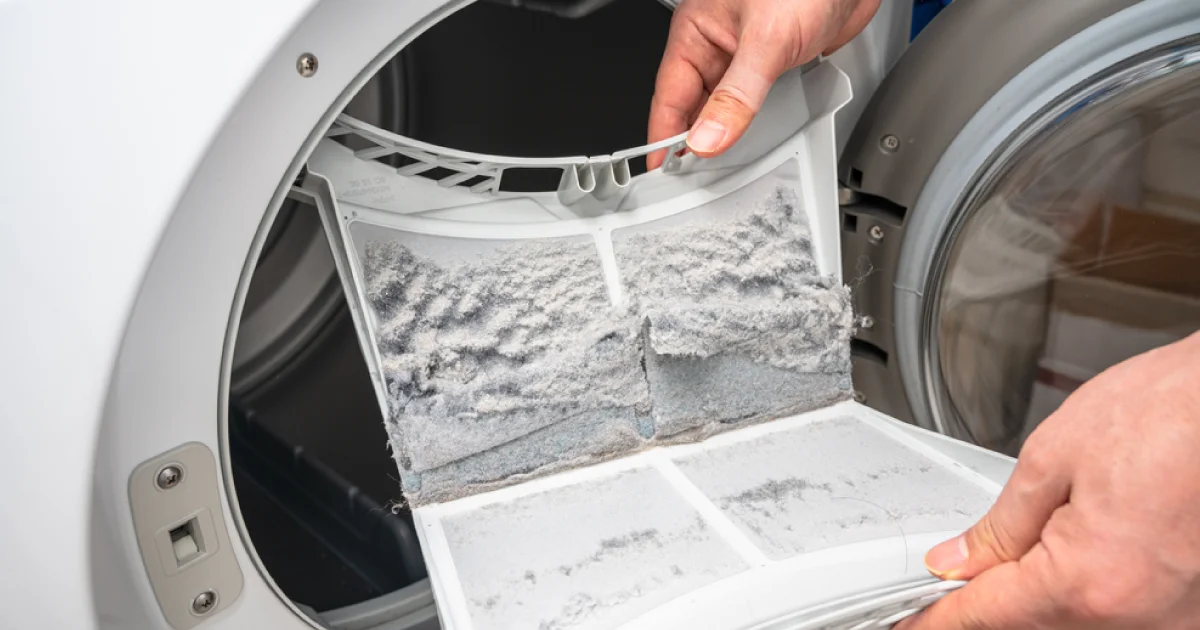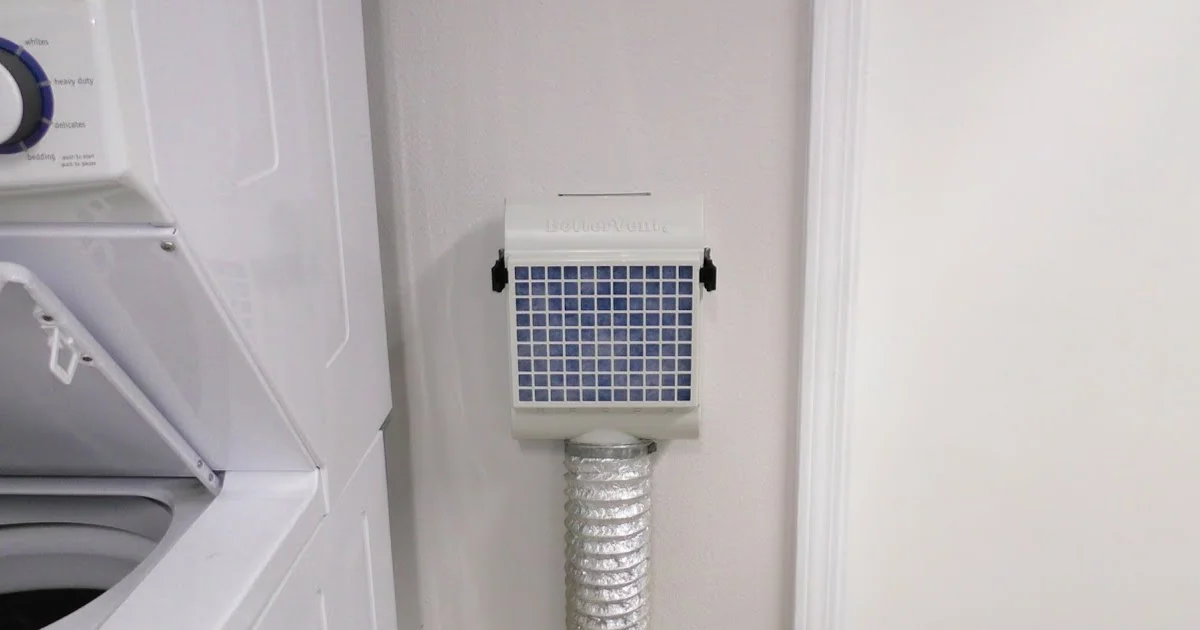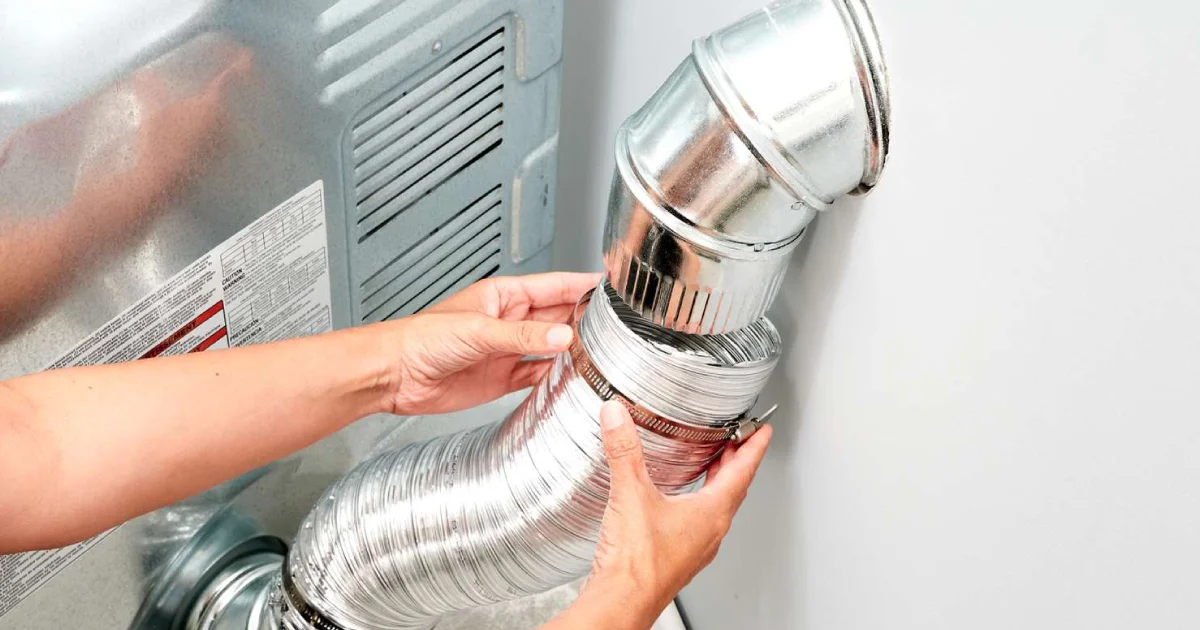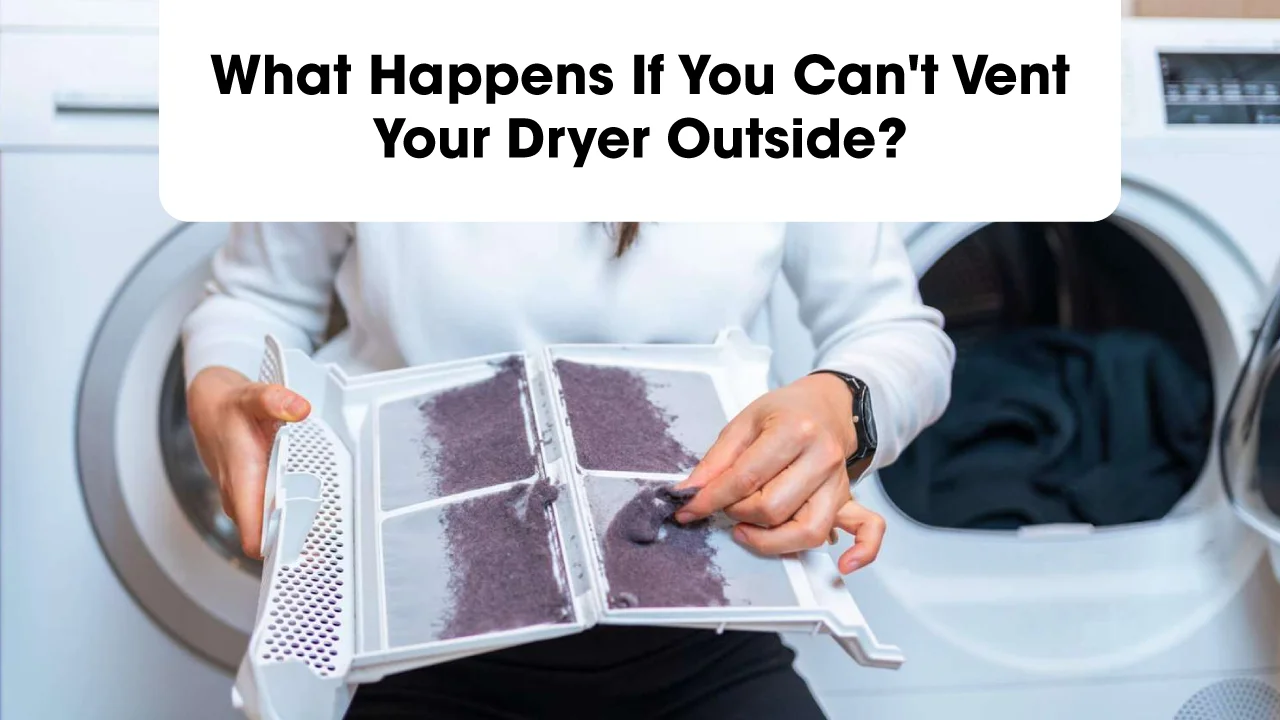Dryers are a lifesaver, especially when dealing with mountains of laundry. But what happens if you can’t vent your dryer outside, like in an apartment or basement laundry room? It might not seem like a big deal, but not having the right ventilation can cause problems.
Here’s a quick rundown: If you can’t vent your dryer outside, there’s a risk of fires due to lint buildup, a chance for mold to grow, your laundry room might get too hot, and drying times could increase, possibly causing damage to your clothes and higher energy bills. It’s a good idea to ask a professional for safe alternatives or be cautious if venting to a window temporarily.
From the danger of fires to unexpected mold, let’s check out the real problems that can happen when your dryer can’t connect outside and find possible solutions for this issue.
Why Does Your Dryer Need Ventilation?
Your dryer produces hot air to dry your clothes, and that hot air carries moisture. Venting your dryer to the outside allows this moisture to escape, preventing it from lingering in your home. If the moisture stays trapped, it can lead to a host of problems.

What Happens If You Can’t Vent Your Dryer Outside?
If you can’t vent your dryer outside, some problems can occur:
- Fire Risk: The lint in your dryer, which is the tiny bits of fabric caught in the lint trap, is flammable. If your dryer can’t vent outside, this lint can build up and catch fire, especially at high drying temperatures.
- Mold Growth: Dryers release moisture during drying. Without proper ventilation, this moisture stays inside, creating a perfect place for mold and mildew. This can lead to breathing issues, allergies, and damage to your clothes and home.
- Uncomfortable Heat: When hot, humid air is vented outside, your laundry room stays cool. Without ventilation, the room becomes hot and stuffy, making it uncomfortable and potentially harmful to electronics and appliances.
- Longer Drying Times: A dryer without proper venting struggles to remove moisture effectively. This means your clothes take longer to dry, leading to higher energy bills and potential damage from over-drying.
So, How to Vent a Dryer Without Outside Access?
If you can’t vent your dryer outside, don’t worry; there are options for you:
- Consult a Professional: Talk to a qualified dryer technician. They can suggest alternatives, like using a ventless dryer or a condensation dryer that collects moisture in a tank.
- Vent to a Window (with caution): As a temporary solution, you can vent to a window under adult supervision. Ensure the window is open enough for hot air to escape, but remember, this isn’t a safe long-term solution and can still pose fire and moisture risks.
- Indoor Venting Option: If you can’t vent outside, you can use an indoor vent kit. This involves installing a kit with steps like finding a good location for the vent, mounting it securely, installing the exhaust line, and calibrating the exhaust flap.

But, very important, never use this kit with a gas dryer because it might make a harmful gas, carbon monoxide. Only use the indoor vent kit with electric dryers that work well with it.
How to Vent Your Dryer Indoors in 4 Simple Steps
Before we begin, take a look at your dryer’s manual to see how long the vent can be. Remember, any twists, turns, or things blocking the vent will make it less effective.
Also, talk to the people in charge of buildings in your area to know the rules for safely venting your dryer indoors.
If your dryer can’t blow air outside, you can use an indoor vent kit in four easy steps:
Choose a Good Spot for the Vent Kit
If your dryer doesn’t have an outside vent and you have an indoor vent kit, find a good place for it. Remember, you’ll need to reach the vent for regular upkeep, so make sure you can get to it when needed.
Be careful not to let the air go into the attic, ridge vent, crawl space, or soffit.
When deciding where to connect the vent kit, put it at the back of the dryer. Use metal fittings to keep the vent kit with minimal bends, ideally no more than two 90-degree turns. Try to avoid twists and turns as much as possible.
Install the Vent Kit
The next thing to do to vent your dryer indoors is to install the vent kit.
How you put up the vent kit might be a bit different based on the kind of kit you have, so always check the manual that comes with it.
Make sure the vent kit stays firmly on the wall. Figure out where the screws should go, then use a power drill to make holes at those spots.
Next, use a hammer to put the plastic anchors in place. The number of anchors might change depending on your kit. When you’re deciding where to put the screws, avoid drilling into sheetrock.
Once the screws are in, place the kit against the wall. Screw it in tightly to make sure it doesn’t become loose.
Connect the Exhaust Line
Now, to set up your indoor dryer vent kit, you’ll need to connect the exhaust line.
When putting in the exhaust line, we recommend picking a spot that makes the shortest path from your dryer to the vent kit, with as few bends or turns – especially 90-degree turns – as possible.

Once you find the right place for the dryer exhaust line, stretch out the flexible part of the duct and attach it to the dryer. Remember, you must use a strong connection, clamping the hose securely.
Finally, after connecting the exhaust line to the dryer, you’ll also need to connect it to the vent kit. Again, make sure the exhaust line is firmly attached to the vent kit.
Set Up the Exhaust Flap
When you’re venting your dryer inside, it’s essential to set up the exhaust flap on your vent kit.
This flap helps with maintenance. Its job is to open when the screen needs cleaning and stay open until you clean and reset it.
Different vent kits have different ways to set up this flap, but many use magnetic weights. Here’s how you can do it:
- Clean the filter screen.
- Put a magnetic strip under the flap and turn on your dryer.
- If the flap opens, turn off your dryer and place another magnetic strip on top of the exhaust flap.
- Test the flap again using cardboard to simulate the vent getting full. Keep adjusting until the flap opens. Aim to set it to open when it’s 80% full.
Once you’ve done this, you can use your dryer as usual. Don’t forget to do regular maintenance to avoid performance issues!
In addition, check out our informative blog to get an answer to your question, “Why is my air vent making noise?”
Golden Rules for Indoor Venting
When you’re using a vent kit to vent your dryer inside, you should think about some things you should do and things you shouldn’t, like:
- Never vent a gas dryer indoors due to carbon monoxide risks.
- Follow the recommended maintenance schedule to prevent overheating.
- Watch for mold and mildew around the vented area.
- Consider the impact on indoor air quality and people’s health.
- Keep in mind that indoor venting is not as effective as outdoor venting, so outdoor venting is preferred when possible.
Besides, visit our informative blog to get an answer to your question, “Is air duct cleaning worth it?”
Contact a Pro
If you’re dealing with dryer issues in Houston, choose Steam Express for professional vent cleaning. Licensed and insured, we’re experts in the field, ensuring your dryer vents are free from lint and blockages. Our thorough process guarantees your dryer functions efficiently. Notice lower energy bills and faster drying times after our service. With authorized and eco-friendly practices, we offer a $99 duct cleaning special. Reach us at 832-479-6562 or [email protected]. Breathe better and live better with Steam Express in Houston and surrounding areas.
Wrapping Up
To sum it up, it’s really important to know the possible problems when you can’t let your dryer blow air outside. There could be dangers like fires or too much moisture. But don’t worry; you can fix these issues by trying other options. You can ask a professional for help or use indoor venting kits carefully. Always think about safety and take advice from experts to make your home safer and healthier. What Happens If You Can’t Vent Your Dryer Outside? Stay informed, stay safe, and figure out the best solution for your own situation.
FAQs
How to install a dryer vent to the outside?
To install a dryer vent outside, attach a vent hood to the exterior wall. Connect a rigid or flexible duct from the dryer to the vent hood, ensuring a secure and airtight fit.
How to clean the dryer vent from the outside with a drill?
To clean a dryer vent from the outside with a drill, detach the vent hood and use a special dryer vent cleaning kit with a rotating brush. Insert the brush into the vent, secure it to the drill, and gently clean the duct by turning on the drill.
Should the outside of my dryer feel hot?
No, the outside of your dryer should not feel hot. If it does, it may indicate a problem with the heating element or ventilation, and you should consult a professional for inspection and repairs to prevent safety hazards.


